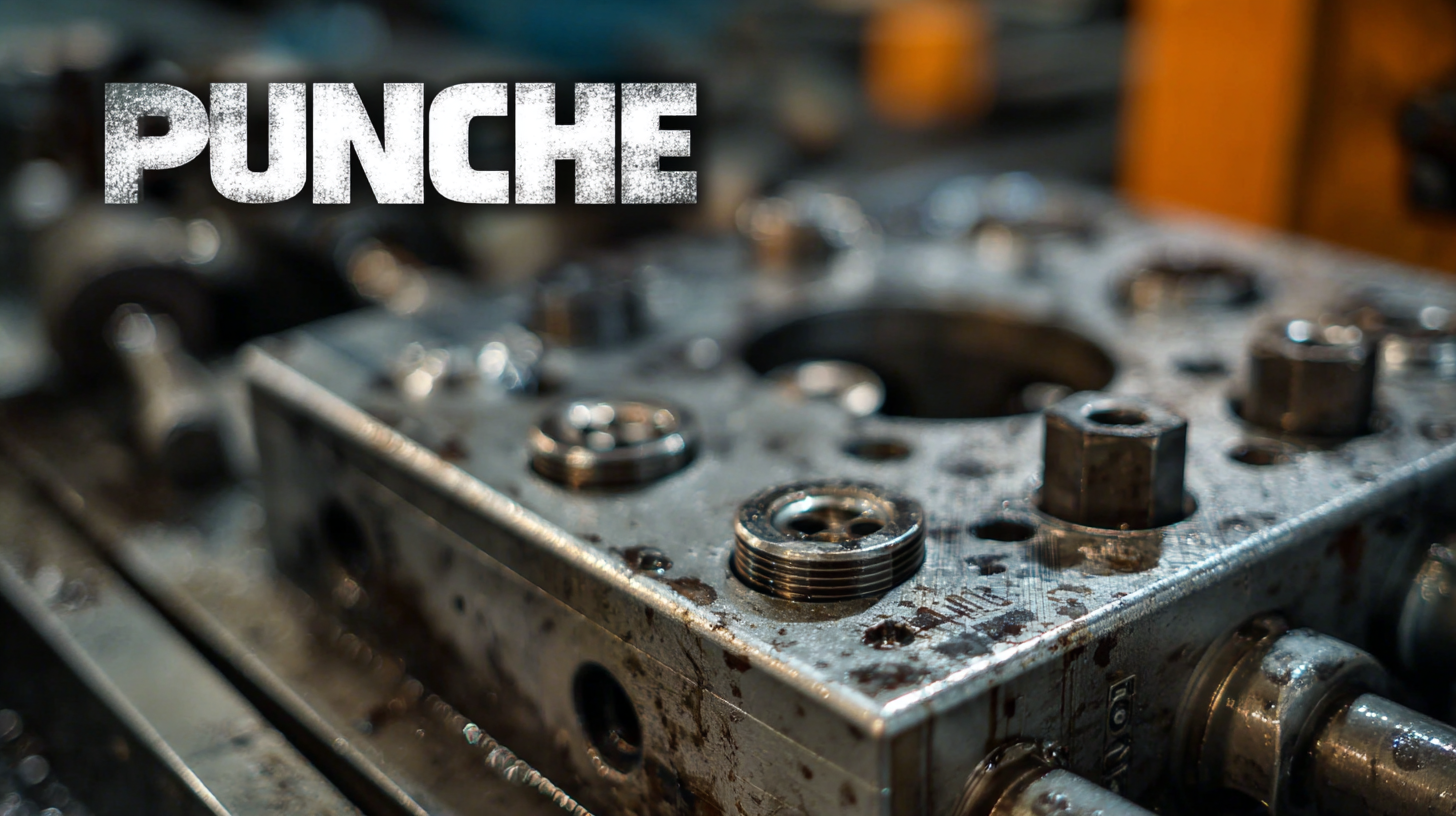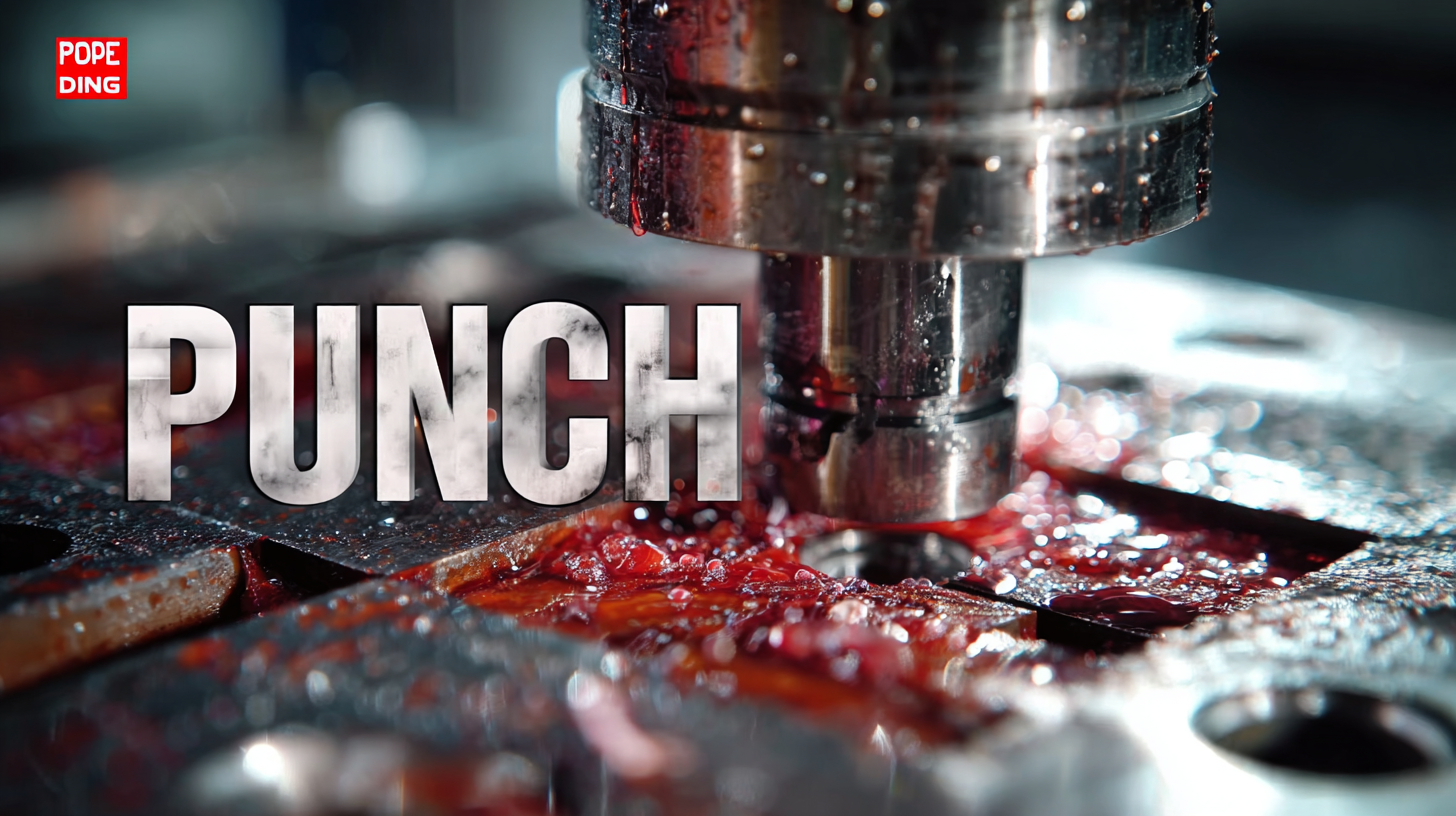In the ever-evolving landscape of the manufacturing industry, punch die innovations stand at the forefront of technological advancements, significantly enhancing production efficiency and reducing operational costs. According to a report by MarketsandMarkets, the global die and mold market is projected to reach USD 78.59 billion by 2025, with a notable emphasis on the adoption of advanced punch die systems. These systems not only streamline processes but also improve precision and quality in manufacturing. As industries strive to meet the increasing demands for customization and rapid prototyping, innovations in punch die technology play a critical role in shaping the future of manufacturing. This blog will explore the top five examples of cutting-edge punch die innovations that are transforming manufacturing practices and setting new standards for efficiency and productivity.

 Innovative materials are at the forefront of enhancing punch die efficiency within the manufacturing industry. Recent reports indicate that the adoption of advanced materials, such as high-speed steel (HSS) and cemented carbide, has led to a significant increase in the lifespan of punch dies. According to a study by the International Journal of Advanced Manufacturing Technology, the lifespan of punches manufactured with these materials can be extended by up to 40% compared to traditional tool steels. This improvement not only reduces downtime for tool changes but also decreases the overall production costs, making manufacturers more competitive in a global market.
Innovative materials are at the forefront of enhancing punch die efficiency within the manufacturing industry. Recent reports indicate that the adoption of advanced materials, such as high-speed steel (HSS) and cemented carbide, has led to a significant increase in the lifespan of punch dies. According to a study by the International Journal of Advanced Manufacturing Technology, the lifespan of punches manufactured with these materials can be extended by up to 40% compared to traditional tool steels. This improvement not only reduces downtime for tool changes but also decreases the overall production costs, making manufacturers more competitive in a global market.
Additionally, the integration of coatings such as titanium nitride (TiN) has revolutionized punch die performance. Research by the Society of Manufacturing Engineers shows that TiN-coated tools exhibit a remarkable reduction in friction, leading to improvements in cutting speed and quality. This enhancement is crucial for high-precision applications where even minor variances can result in significant losses. As a result, manufacturers that incorporate these innovative materials and coatings are reporting efficiency gains of up to 30%, directly influencing their output capacity and profitability. The continued evolution of punch die materials is undoubtedly pivotal in driving the manufacturing industry towards a more productive future.
The manufacturing industry is experiencing a revolution thanks to smart technology integration in punch die innovations. By leveraging the Internet of Things (IoT) and artificial intelligence (AI), manufacturers can enhance the performance of punch dies, leading to increased efficiency and reduced costs. IoT devices enable real-time monitoring of punch die operations, allowing for predictive maintenance and minimizing downtime. This connectivity facilitates a more responsive production environment, where adjustments can be made swiftly based on operational data.
Tip: Implementing IoT sensors on your punch dies can lead to valuable insights on wear and tear, helping you schedule maintenance before costly failures occur. Additionally, utilizing AI-driven analytics can help optimize punch die design by simulating various production scenarios, ensuring maximum efficiency.
As manufacturers embrace these advancements, they can look forward to innovations that not only streamline processes but also improve quality control. AI algorithms can analyze production metrics, identifying patterns that may indicate issues before they escalate. This proactive approach ensures that errors are minimized, ultimately resulting in higher-quality end products.
Tip: Regularly analyze your production data with AI tools to spot trends and anomalies. This practice can enhance your decision-making processes, allowing you to address potential issues promptly and maintain a competitive edge in the manufacturing landscape.
In recent years, the manufacturing industry has witnessed significant innovations in punch die technology aimed at promoting sustainability. One of the most notable advancements is the development of dies that utilize advanced materials with better durability and efficiency. These new materials not only extend the lifespan of the dies but also reduce the frequency of replacements, lowering overall waste in the production process. By investing in longer-lasting dies, manufacturers can achieve substantial reductions in both material waste and the energy required for manufacturing replacements.
Another crucial aspect of sustainable punch die manufacturing lies in energy consumption. Cutting-edge technologies such as electric drives and optimized machinery settings are being employed to minimize energy usage during the die production process. These innovations help to streamline operations and reduce the carbon footprint associated with traditional manufacturing practices. Moreover, by implementing smart monitoring systems, manufacturers can track energy consumption in real-time, allowing them to make informed decisions that lead to further energy savings and a more responsible approach to resource management. Ultimately, these sustainable practices not only benefit the environment but also result in cost savings for manufacturers, creating a win-win situation in the competitive landscape of the manufacturing sector.
In today's rapidly evolving manufacturing landscape, the customization of punch dies has become a crucial trend, allowing for enhanced efficiency and precision in various industrial applications. As the press brakes market is projected to reach $995.3 million by 2032, growing at a CAGR of 5.9% from 2023 to 2032, the significance of tailored solutions to meet specific production demands is more vital than ever. Manufacturers are increasingly investing in advanced technologies to design punch dies that cater to unique operational requirements, thereby improving output and reducing waste.
Moreover, the hand tools market reflects a similar upward trajectory, with an anticipated growth from USD 13.54 billion in 2020 to USD 17.9 billion by 2025. This growth, propelled by a 6.1% year-over-year increase and a projected CAGR of 5.7% to reach USD 26.9 billion by 2035, indicates a robust demand for tools that offer greater adaptability and functionality. Customization of punch dies not only streamlines the manufacturing process but also aligns with the increasing trend toward automation, positioning companies to thrive in a competitive environment. This innovative approach not only enhances product quality but also drives profitability, making it a focal point in the evolution of manufacturing practices.
| Innovation Type | Key Features | Industrial Applications | Benefits |
|---|---|---|---|
| Modular Punch Die Design | Interchangeable components for various shapes | Automotive, Aerospace | Increased flexibility and reduced downtime |
| 3D Printed Punch Dies | Complex geometries with minimal waste | Medical Devices, Electronics | Cost efficiency and rapid prototyping |
| Smart Punch Dies | Sensors for real-time monitoring and feedback | Manufacturing, Robotics | Improved quality and reduced errors |
| Wear-Resistant Coatings | Advanced materials for durability | Heavy Machinery, Aerospace | Extended tool life and lower maintenance costs |
| Customizable Punch Die Systems | Tailored solutions for specific needs | Consumer Goods, Appliances | Enhanced production efficiency and adaptation |
In the evolving landscape of the manufacturing industry, punch die innovations are set to play a crucial role in shaping future production capabilities. As we move towards 2025, emerging technologies such as Artificial Intelligence (AI) and automation are transforming traditional manufacturing processes. According to reports, the global hand tools market is anticipated to rise from $13.54 billion in 2020 to $26.9 billion by 2035, reflecting a significant compound annual growth rate (CAGR) of 5.7%. This growth underscores the importance of modernizing manufacturing tools, including punch dies, to enhance efficiency and sustainability.
Moreover, the integration of Machine Learning (ML) into manufacturing systems allows for predictive maintenance and optimized design processes. This not only reduces downtime but also significantly lowers production costs. As organizations increasingly prioritize sustainability, new innovations in punch die technology are incorporating eco-friendly materials and energy-efficient designs, aligning with broader industry trends towards sustainable practices. Reports indicate that sectors adopting these technologies will gain a competitive edge, highlighting the imperative for manufacturers to invest in advanced punch die solutions for a robust future in the industry.

